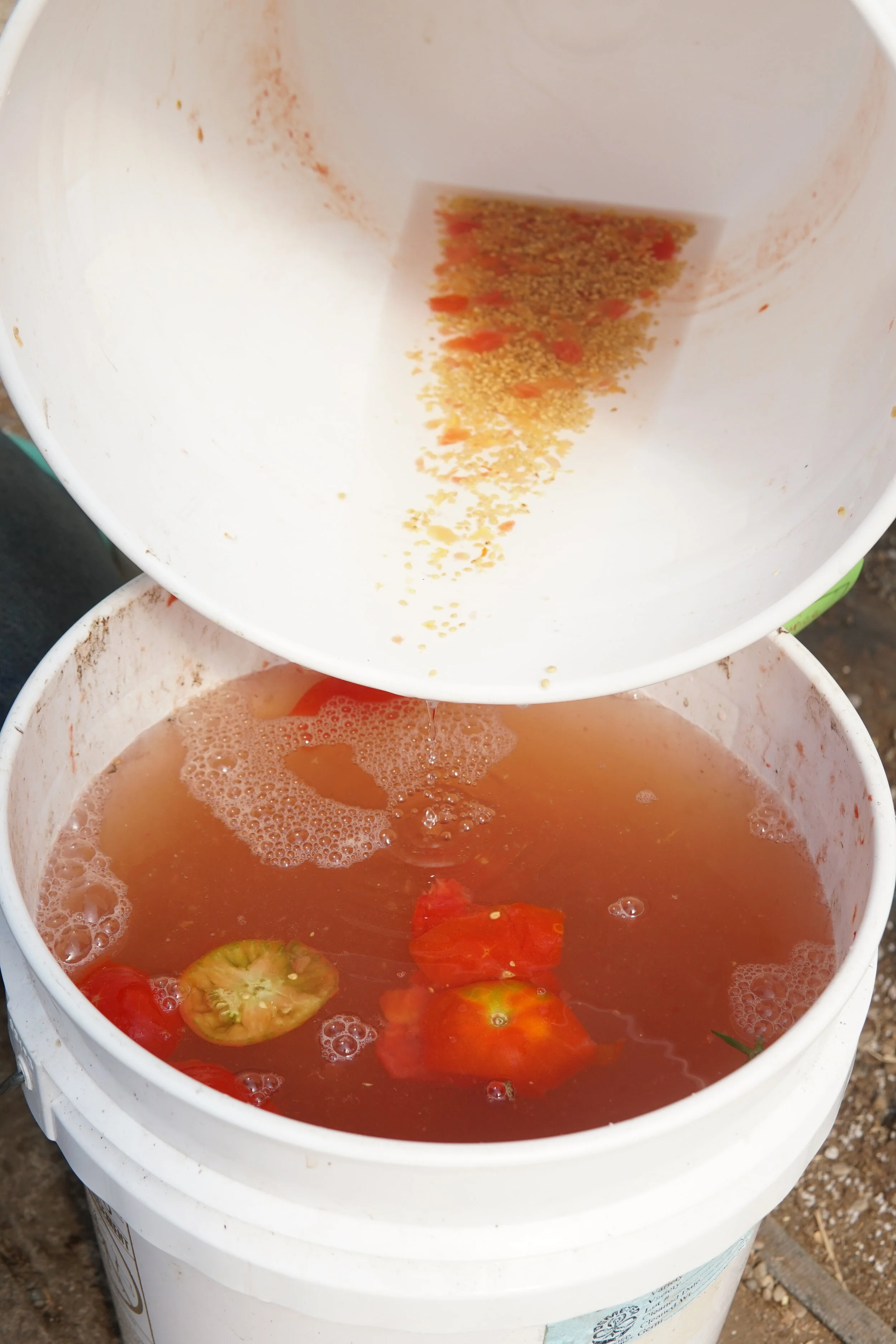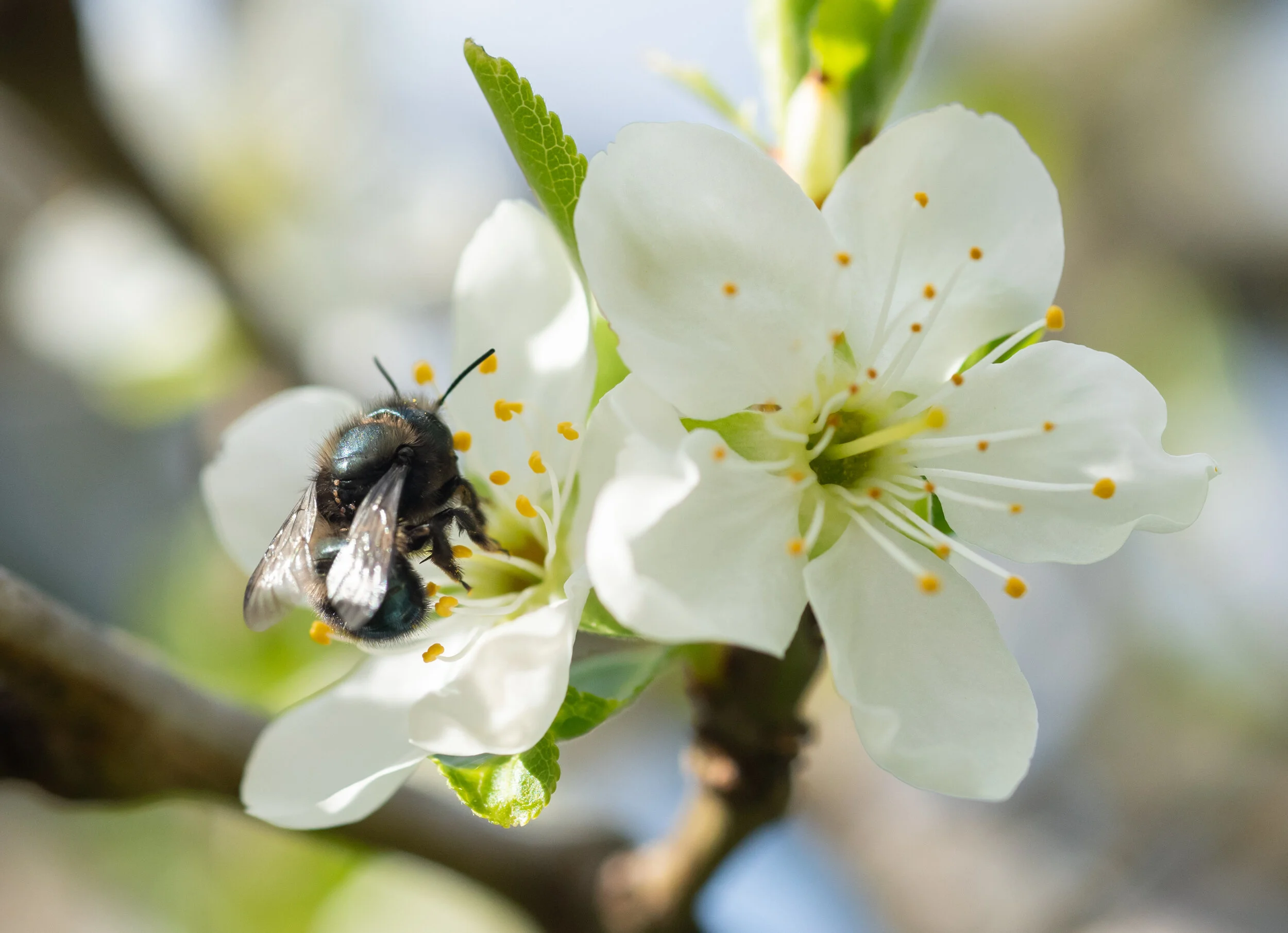Quality Seed Starts with Quality Stock Seed
First things first! What is stock seed?
In a nutshell, here at Territorial stock seed is seed harvested from select plants that will be used for future crop productions.
Producing stock seed at our farm, London Spring Farms, is a multi-step and multi-faceted process. We grow the plants; evaluate the crops for type, health, production, and quality; select the best performing plants for harvest; and extract and clean the seed, all in one growing season. This comprehensive approach not only yields high-quality seed, but also the best variety selection for our genetic lines.
Once a current production crop is in the ground, we evaluate it several times throughout the growing season. During the first evaluation we are checking overall plant health based on visual growth signs such as, being well rooted and actively growing, as well as color of foliage. This stage happens shortly after transplant when small plants are most susceptible to insect pressures and any changes in growing conditions that are out of our control.
Lettuce seed crops
Tomato seed crop
The next check-up happens once plants have developed their frame and full-sized foliage. We check to make sure the plant habit is correct and that the plants have correct foliage. In the case of tomatoes this means standard leaf vs. potato leaf. Over the many years of production we have noticed other less distinct foliage types having to do with curling and various degrees of serration. Next comes the initial fruit look. Do the green, immature fruit have shoulders? If so, are they dark or light? What shade of green is the fruit? What is the shape of the fruit? Round, plum, pear, cherry, roma, squat slicer, bulky paste, pleated?
Now as we roll into mid-summer with the early ripening tomato fruits, we again walk through the crops looking for other attributes that are important to us and our home garden market. At this point we have weeded out most, if any, plants that are off from the desired look, and now have a chance to look at final fruit color. We will remove any remaining stragglers that have not stood out until this point.
With our open-pollinated heirloom varieties that tend toward good flavored, long season, stingy yielding plants we are specifically looking for plants within the crop stand that ripen earlier with heavier yields than the majority. We walk the crop taking note of the average number of fruit that are ripe in the first flush, and this gives us a guideline to aim for when selecting a higher yielding plant. First ripe however, is not the only criteria, it’s simply the beginning. We are looking at fruit size as well. We want more fruit, but they need to be the right size to meet the variety description. We also look for what we call ‘food value’ so we count the total amount of fruit on plant. What good is a heavy first flush if that is all you get? We like to have varieties that will provide food throughout the growing season.
Now we are ready to select a representative group of plants for future stock seed. We flag these chosen ones to be harvested separate from the crop. They are ready to harvest when the fruit has ripened past edible, but not so far that it starts to rot. This ensures that the seed has the potential to fully mature within the fruit. We have found that this gives us seed that will remain the most vigorous for long term storage, thereby allowing us to use it potentially for several generations.
Once we are ready to harvest, we pick and hand process these fruits to ensure the least possibility of cross contamination from the seed processing machines. Hand processing involves cutting open the fruit, best done horizontally in my opinion, as it makes a cleaner seed / juice slurry when squeezed into a bucket. Depending on the variety, smaller buckets should be used for sauce/paste types that do not have much juice. We need a good volume of juice to seed ratio, so that it ferments well. If the layer is too thin it will become a solid sheet of mold with seed stuck to the bottom.
During this fermentation process we stir the seed slurry several times. We place the seed in the sun or another warm place, so it can ferment quickly, typically overnight. The cooler the temperatures the longer fermentation takes. To see if it is ready to decant, we stir the slurry to mix the layers, then pull out some of the seeds. If we can still feel or see the gel coat, then it is not ready. It’s worth noting that if there’s small white tails it has been too long, and the seed is starting the germination process.
Once the seed has separated from the gel coat, we add water and stir. Good seed will sink to the bottom of the bucket much like gold. After the water motion settles, we’ll carefully tip, and anything that floats off the top is waste. I realize the first few times of doing this it seems like we are losing seed, but it is light-weight seed that, yes, may germ but will not be the best for longer term storage or vigor. We continue adding water and pouring off until the seed looks clean of debris. The less skin and pulp squeezed into the bucket in the early part of this process the better.
Using window screen mesh, we lay out the seed and rinse with a hose to remove any fine dirt, hand squeeze most of the moisture out and put a fan on to dry. We spread the seed out as thin as we can and as it starts to dry (usually several hours) we break up any clumps by rubbing between our hands. We have found that this not only breaks up clumps but softens your skin as well!
Once dry (dry seed should not clump together when squeezed, it should flow freely) the seed is stored in our cold room.
Dry tomato seed ready for storage.
Over the years we have continued making these types of stock seed selections allowing us to get ripe, good tasting, heirloom varieties to fully mature in our short season at our farm.
Author: Sue Ann G.













